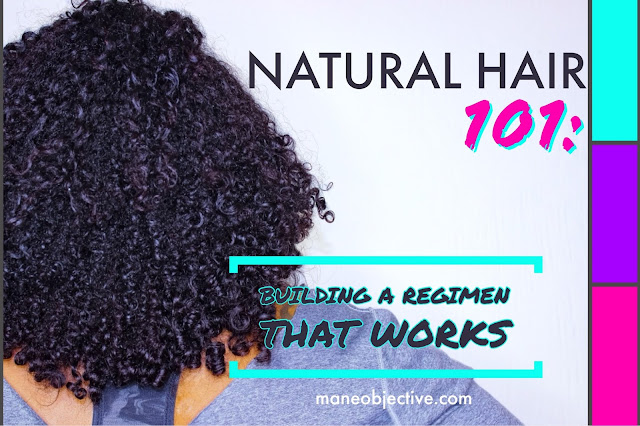 |
| Let's cut the fluff and get down to the basics of wash day. |
Thanks to the onslaught of DIY recipes, overhyped hair products, and the fact that we somehow equate number of followers to natural hair knowledge, there's a lot of bad information circulating on the internet and social media. My goal with this post is to present you with some concise, useful information that you can practically apply starting today.
Just like a thorough wash day, we're going to attack this bad boy in sections.
The Ideal Wash Day
On average, your wash day should contain four key steps:
✅ Detangle
✅ Cleanse
✅ Deep Condition
✅ Style
Depending on the products you choose and how you establish your regimen, it could be three steps. Every once in a while you may do something special (like henna, a tea/ACV rinse, pure protein, or an Olaplex treatment) that sends you occasionally to five steps. But six, seven, eight, and fifty-leven-step wash days should not be a thing. And if you're regularly executing wash days with extra excessive steps, that's a sure sign that something in your regimen isn't working.
If you're pre-pooing with an oil mix, then have to turn around and detangle with a conditioner, then co-wash or shampoo everything out, only to turn around and deep condition then follow up with a rinse — there's a strong possibility that your regimen is causing product buildup, is built around ineffective products, involves excessive manipulation (leading to weak hair and unnecessary damage), or all of the above.
At the end of this post, I'll be sharing my current regimen/rotation of products so you can see a true 3-4 step regimen in action. But now, let's get into some key 411 on the firs two steps (steps 3 and 4 will be posts all on their own):
Detangling
Depending on your hair type and texture, detangling can be an easy, breezy step or a pre-wash day marathon in and of itself. Do it the wrong way for your hair, and you risk unnecessary breakage, premature shedding, and stalled length retention (aka no growth). Do it the right way and you'll be setting the foundation for a successful wash day.
Wet, Dry, or Damp?
I'm not going to preach about the wonders and joys of conditioning wet hair over dry. If what you're doing right now is working, keep doing it. If what you're doing is not working, this is your opportunity to try something different — whether it be a method or a product. When it comes to detangling, there are three main ways to get the job done:
- Wet Detangling: yields the most slip, and tends to be "easier" and faster, but requires gentle movements because hair is at its weakest when wet. More elastic, yes — but more susceptible to breakage as well. Best for strands that are mostly smooth with healthy elasticity and strength.
- Dry Detangling: often regarded as the most painstaking and time consuming, but when done correctly, yields less breakage due to the of increased tensile strength of dry hair. Hair is still breakage prone, because dry hair lacks elasticity. Best for coarse strands, raised/ragged cuticles, and incredibly tangle-prone hair.
- Damp Detangling: seemingly the best of both worlds, but requires the same amount (if not more) time than dry detangling. Hair has some slip and some elasticity, but requires patience and careful movements. Best for strands that are somewhat smooth with weaker elasticity and more breakage prone (i.e. heat damaged or color treated).
I prefer to detangle on soaking wet hair in the shower. 🚿
The Right Tool(s)
Some people say finger detangling is trash, others believe combs and brushes are not of God. In a healthy regimen, each one has its place. Personally, the bulk of my wet detangling happens with my fingers. It's how I'm best able to feel for tangles and knots while removing shed hair (and sticking it on the shower wall, naturally). In the rare event that I've neglected my hair beyond the point of finger detangled redemption, I reach for a seamless wide-tooth comb, then follow up with my phalanges. And during my wash and go styling process, you guys already know I'm all about that Felicia Leatherwood Detangling Brush action.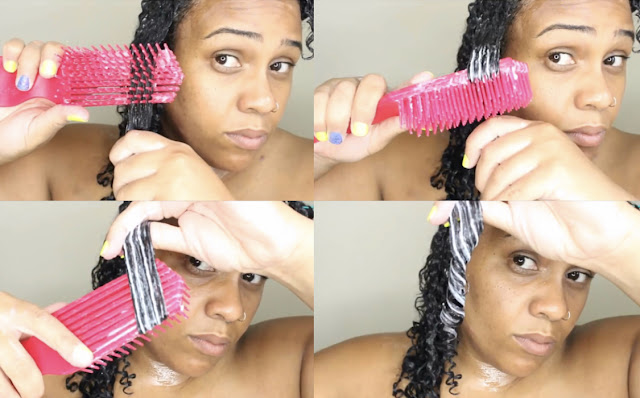 |
| I'm telling y'all, the Felicia Leatherwood brush is that WORK. |
✅ Finger detanglers: if you have jagged/uneven nails or rock acrylics, wear vinyl gloves.
✅ For wide-tooth (or any) combs, make sure they're seamless to prevent cuticle friction/damage.
✅ Brushes: I highly recommend ditching the Denman and opting for the Felicia Leatherwood Detangler Brush. It delivers the same poppin' curl results with the added benefit of flexible rows of teeth to prevent snagging and breakage.
Work in Sections
This one absolutely — regardless of whatever products and tools you use — is a must. You can separate your hair in to 2, 4, 5, 6, 32, however many sections you need to successfully navigate through and detangle your hair. Use clips or twists to keep your undetangled hair away from the section you're working on, and then twist/clip it back up when you're done. If you use clips, just be sure your sections are parted fairly clearly. You don't want to risk breakage by detangling a section and accidentally tugging at a hair that's actually clipped into another section.
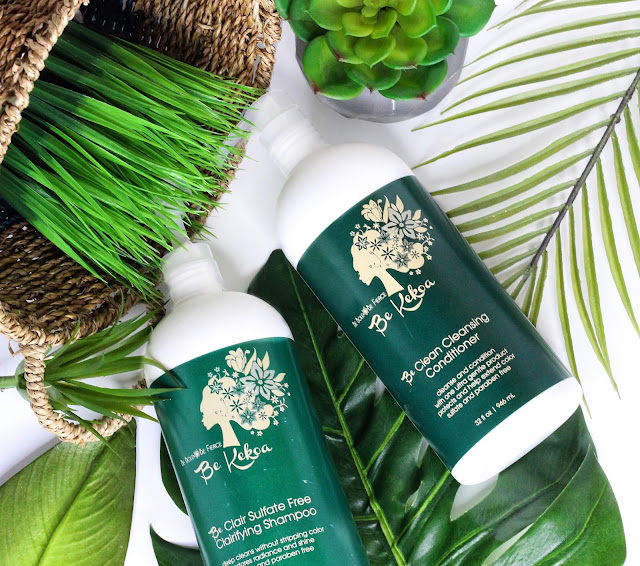 |
| My Co-Washing and Clarifying Picks, courtesy of Be Kekoa |
At this point in the Year of Our Lord 2019, I sincerely hope you're not running from shampoo. I don't care how many silicones you stay away from, what oils and butters you don't allow to touch your tresses, or how long you've "detoxed" your hair from "chemical products".
Everybody needs shampoo — periodT.
In order to have healthy, growing hair, you need a clean scalp and clean hair. Follicles clogged with dirt, oils, product buildup, and flakes can prevent the hair from growing and even lead to it falling out. Having the hair itself be clean is important too, because hair riddled with build-up is more difficult to hydrate — and dehydrated is weaker, breaks easily, and splits. Does this mean that you have to abandon co-washing? Not particularly. I think co-washing has its place in a regimen right along shampooing — and here's why.
The Case for the Co-Wash
The premise of co-washing is relatively simple — you load gobs of conditioner (or tiny palmfuls if you're fancy and have restraint) into your hair. Massage it into your scalp and along the hair shaft, and rinse it out, just like you would a shampoo. The only difference being that your co-wash doesn't lather. All conditioners contain incredibly mild surfactants that can remove up to approximately 90% of dirt and oil from the hair — which is pretty darn clean. Don't believe me? Check this microscope test.
The benefits of co-washing include:
✅ Minimizing the number of products used on wash day (you can detangle, cleanse, and even condition with the same product if you choose to)
✅ Increased moisture retention, hydration, softness, smoothness, and shine in hair (which can aid in length retention efforts)
✅ Less frizz and improved curl definition (if you care about those things)
✅ Generally results in a shorter wash day (see ✅ #1)
But of course, co-washing has its limitations. That remaining 10% of dirt and oil that gets left behind on the hair can lead to buildup, dryness, limp hair, and clogged follicles (which can impede hair growth). That's why I also make...
The Case for Shampoo
I've written before about why your regimen needs shampoo, and how the shampoos of today are not nearly as frightening as those of yesteryear. The store-bought shampoos we used to have to 'make do' with (because the market hadn't yet grown to cater to our needs) were essentially glorified dish soap. Many of the sudsy cleansers on the market today are what I like to call shampoo 2.0 — they do not contain harsh detergents, are loaded with natural extracts, and contain conditioning agents. And most importantly, they're designed to meet the unique needs of our textured hair. These sulfate free-shampoos:
✅ Gently cleanse the hair and scalp while removing product and follicle-clogging build-up
✅ Optimize hair growth by removing oil, dirt, and debris -- thereby allowing follicles to function healthily
✅ Make your deep conditioner work better by allowing your DC (which has a positive charge) to adsorb/stick to your hair (which has a negative charge)
Much like co-washing, shampooing does come with a particular set of drawbacks. For some naturals, even the most gentle of shampoos can be drying to the hair and scalp. Shampoo also happens to give zero cares about your curl pattern (with the exception of a few), and will almost always cause some level of frizzing that you must rely on a deep conditioner to correct. How can you manage a happy, healthy balance that reaps the benefits of both in your regimen?
Hang on to your hats, we'll get there in a second. But first, a few tips for the new naturalistas and transitioners in the room:
Co-Washing How-To & Tips
- Thoroughly saturate hair with warm/very warm water for 1-2 minutes to loosen debris and buildup. The constant stream of water also helps loosen shed hairs.
- Apply conditioner or co-washing product to all hair so it can marinate and soak into the hair as you work on other sections (which will make detangling even easier).
- One section at a time, massage the co-wash through your hair from root to end, detangling if necessary. Twist or clip back up once done and repeat.
- To cleanse the scalp and avoid re-tangling, gently pinch your clean twist between your thumb and index finger about an inch away from your scalp. Take your other hand and use the pads of your fingers to vigorously rub your scalp in that section to loosen dirt, debris, oils, and flakes.
- One by one, release sections and rinse.
- Make sure that your hair is detangled prior to shampooing. Just...trust me on this one.
- Thoroughly saturate hair with warm/very warm water for 1-2 minutes to loosen debris and buildup. The constant stream of water also helps loosen shed hairs.
- One section at a time (with your hair still in the twist or braid), apply a tiny dab of shampoo directly to your scalp. Gently pinch your twist between your thumb and index finger about an inch away from your scalp. Take your other hand and use the pads of your fingers to vigorously rub your scalp in that section to loosen dirt, debris, oils, and flakes.
- As the shampoo lathers, allow it to travel down the length of your hair. If it doesn't make it all the way, feel free to add a bit more shampoo.
- Rinse and follow up with your deep conditioner of choice.
 |
| My tgin deep conditioning rotation: strengthening and moisturizing. |
These days, simple, effective, and to the point are my jam. I have a few variations and switch-ups depending on the needs of my hair, but the whole point of this new journey and series was to keep things relatively consistent.
Because I've finally gotten my scalp under control (hallelujah, and yes, a post is coming on that soon), I'm now a part of that washing once a week crew. So in a given month, barring any random issues (like a super sweaty gym session, swimming, or getting sand in my hair), I average about 3 wash days. I follow a 3:1 co-washing-to-shampooing ratio, meaning the first 3 wash days of the month involve co-wash only, and the 4th/last is where I use shampoo to clarify. If my hair is feeling particularly build-uppy, I'll throw in a second clarifying shampoo mid-month. So far, I've only had to do that once (on account of using entirely too much butter to break my gel cast 😭).
Three weeks out of the month, my wash day looks something like this:
✅ Detangle & Cleanse: Be Kekoa Be Clean Cleansing Conditioner
✅ Deep Condition: tgin Honey Miracle Hair Mask or Soultanicals 'Fro Despair Vitamin Hair Repair
That last week, typically at the end of the month, I spend a little more time:
✅ Detangle: Be Kekoa Be Clean Cleansing Conditioner
✅ Cleanse: Be Kekoa Be Clair Sulfate-Free Clarifying Shampoo
✅ Deep Condition: tgin Miracle RepaiRx Curl Protein Reconstructor (hair), Soultanicals 'Fro Despair (scalp — more on this and my psoriasis in a post soon, I promise)
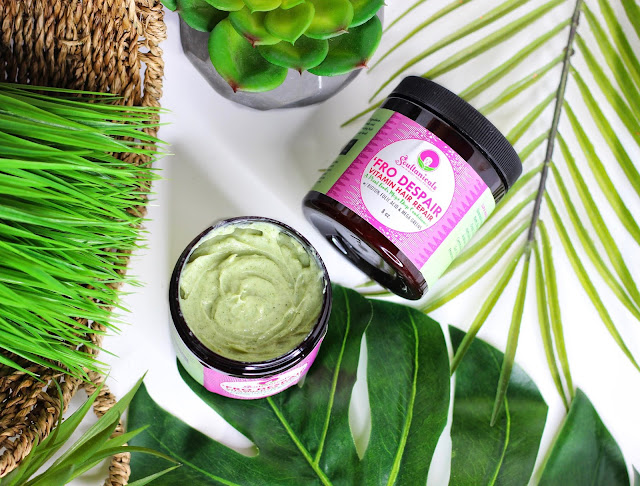 |
| For nourishing my scalp and hair, Soultanicals is the way to go. |
If you're a fan of shampooing more often, you can oscillate between weekly moisturizing shampoos and mid-week co-washing with clarifying suds at the end/beginning of the month. If you like the idea of co-washing, your wash day routine can mirror mine or even alternate between co-washing and clarifying every week. Feel free to tinker with frequency and rotation until you find the cadence that keeps your hair thriving.
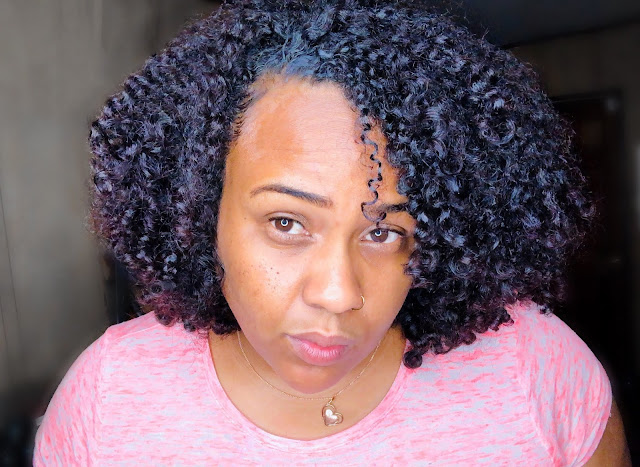 |
| Wash day consistency is helping my curls THRIVE honey! |
from The Mane Objective http://bit.ly/2V6FHWY

No comments:
Post a Comment